
Final Fantasy is a series of sci-fi and fantasy role-playing games, each usually about a band of heroes who teams up to face a world-threatening evil of some kind, fighting enemies along the way. To date, there have been 15 different games in the mainline series since 1987, each featuring a different setting, cast of characters and story but all taking place in the same universe and containing similar elements that have become staples of the series.
It is an important franchise in the history of gaming because it popularized the RPG and pushed the envelope on what could be achieved within the genre. Its influence can be felt in everything from Pokémon to Elder Scrolls, so I think it’s important to learn from where Final Fantasy received its influence.

In the 1980s, a game programmer named Hironobu Sakaguchi designed several computer and Famicom games for game publisher Square (the company now known as Square Enix after they merged with game company and fellow RPG developer Enix), but none of them were popular. However, there were three games made by three other software developers that were popular: the monster-filled RPG Dragon Quest from Enix, the exploration-heavy adventure game The Legend of Zelda from Nintendo, and the innovative open-world computer game Ultima from Origin Systems. Sakaguchi was a fan of these games and would take inspiration from all of them when creating his next game for Square.
Sakaguchi had always wanted to make an RPG, but it wasn’t seen as commercially viable until Dragon Quest came along.
After he came up with the idea for his own RPG called Final Fantasy, he vowed to leave the game industry and return to university if it was not successful. This meant that he intended for the first Final Fantasy to be his last game, which explains why each game in the series featured a different cast of characters. The first game was not designed to set up a sequel, hence the “Final” in the name “Final Fantasy.”
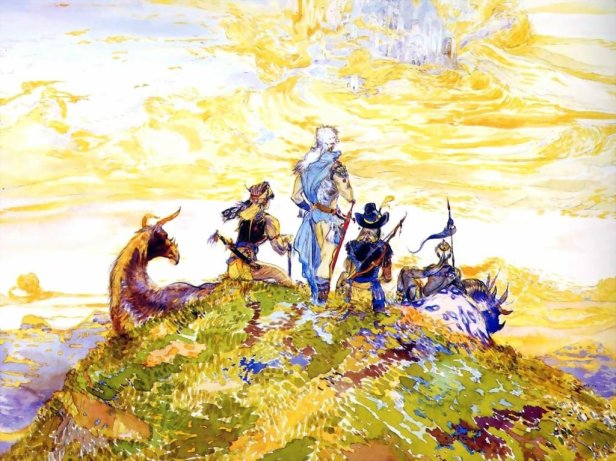
With the possibility of the game being his swan song, Sakaguchi put his heart into the game to deliver a satisfying finale to his video game career, and the 8-bit epic would need a team that was bigger than usual for a typical Square game to complete it.
This team included Koichi Ishii, who would later go on to create the bird-like chocobo and cat-like moogle (the two most popular species in the series) in addition to his own video game franchise the Mana series.
Akitoshi Kawazu, a fellow RPG fan who loved Ultima and Wizardry, would develop the battle sequences for the first Final Fantasy (which were based off of Dungeons & Dragons and Wizardry) and would later be involved in the SaGa series and the Final Fantasy: Crystal Chronicles spin-off series that originated on the Nintendo GameCube.
More people would join as the game took shape and showed promise. Hironobu Sakaguchi came up with the story, Kenji Terada wrote a scenario based off of Sakaguchi’s story, artist Yoshitaka Amano (Speed Racer, Vampire Hunter D) designed the characters and Nobuo Uematsu provided the sweeping emotion-filled music (which he would do for almost every main game in the series. Uematsu was definitely the John Williams of Final Fantasy).
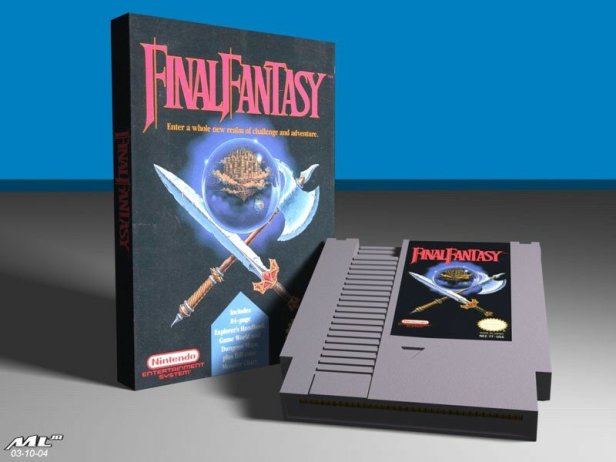
The game was set in a fantasy world inhabited by many species such as humans, elves, dragons, mermaids and even robots. The four elements of the world were governed by four crystals: Earth, Fire, Water and Wind.
400 years before the time when the game is set, the Lafeinish people, who crafted airships and built a space station known as the Floating Castle using the Power of Wind, witnessed their country decline after the Wind Crystal mysteriously went down.
200 years later, the Water Crystal also lost power and the shrine of an ocean-based civilization sank in a violent storm.
Soon the Earth Crystal and the Fire Crystal went down and as a result, the earth was plagued in fire and vegetation started to decay as the planet became a wasteland.
Four Warriors of Light are prophecied to arrive in a time of darkness by a sage named Lukahn and that’s where you come in. You begin the game by choosing four characters to make up your group and assigning each a class: Fighter, Thief, Black Belt, Red Mage, White Mage or Black Mage.
When the four warriors arrive in the Kingdom of Coneria, they are each carrying one of the darkened orbs. Your goal is to travel the land vowing to restore its light by defeating the four fiends who hold the four elements: Lich the Earth Fiend who dwells in the Earth Cave, Kary the Fire Fiend who dwells in Gurgu Volcano, Kraken the Water Fiend who dwells in the Sunken Shrine, and Tiamat the Wind Fiend who dwells in the Floating Castle.
Defeating the four fiends restores the four orbs and opens a time portal in the Temple of Fiends that takes the Light Warriors 2,000 years into the past where they discover that the culprit responsible for sending the four fiends into the present was an evil knight named Garland, who was granted eternal life in exchange for sending the fiends into the future, and the time loop transformed Garland into an archdemon named Chaos.
If you are able to defeat Chaos, you will end the time paradox, but you will unfortunately erase the knowledge of your heroic deeds as the future is restored to normal, though legends of the heroism of the Warriors of Light remain in some parts of the land.

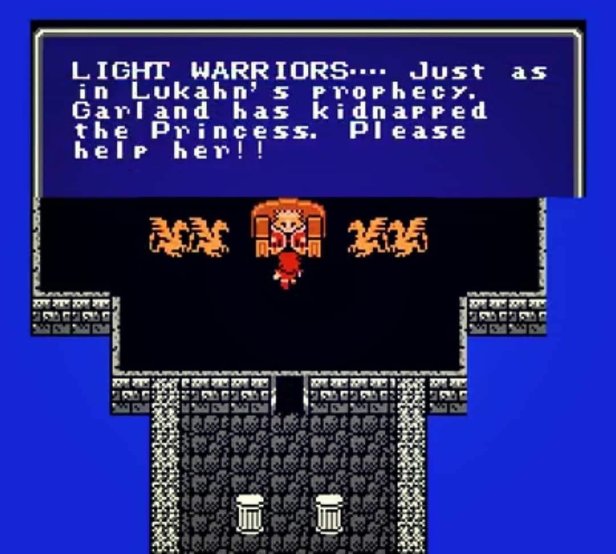

When developing the Final Fantasy series, Sakaguchi drew inspiration from the films of Hayao Miyazaki, which you can see in the airships (Castle in the Sky) and later in the flightless birds that could be ridden by humans known as chocobos (Nausicaä of the Valley of the Wind).
The first game was released for the Famicom in Japan in 1987 (it came to North America in 1990) and it was so popular that it reversed the fortunes of Square and became their flagship franchise. It was later re-released for PlayStation, Game Boy Advance, PlayStation Portable and mobile phones in remakes with updated graphics.
The Final Fantasy series has been credited with popularizing certain RPG elements. Dragon Quest had a turn-based battle system, which meant that when you ran into a monster, the world map you were exploring disappears and the screen changes to a battle menu in which you select fight commands to defeat your opponent. The monsters in Dragon Quest were fought from a first-person perspective, but Final Fantasy introduced the side-view perspective, where your band of fighters were seen on screen along with your opponents, which has been borrowed by almost every single turn-based RPG since.
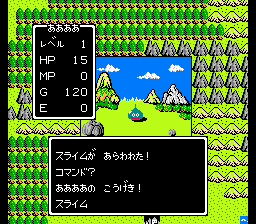
Battle screen from Dragon Quest.

Battle screen from Final Fantasy.
In addition, not a lot of Japanese RPGs implemented weaknesses and strengths against certain elements such as fire and ice, but Final Fantasy definitely popularized it.
The idea of choosing your starting characters at the beginning of the game was a wise feature that highlighted one of the most fun aspects of games like Dungeons & Dragons.
Later games in the series would continue to innovate the RPG formula and add new features that would become equally influential, and I will discuss those in my next few blogs as I dive further into the franchise.
The popularity of the series continues to this day and it has been cited as a huge influence on many prominent game developers. Fans include Peter Molynuex (Fable), Bioware founder Greg Zeschuk (Dragon Age, Mass Effect) and Tim Schafer (Grim Fandango, Psychonauts).
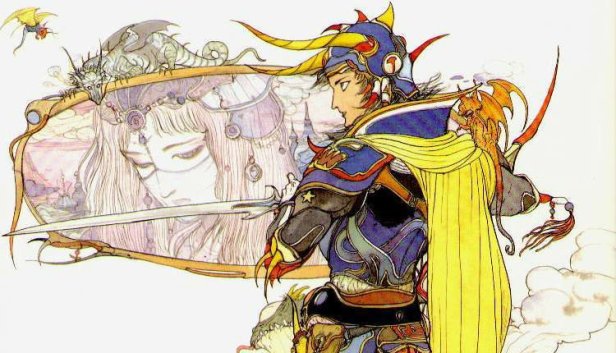

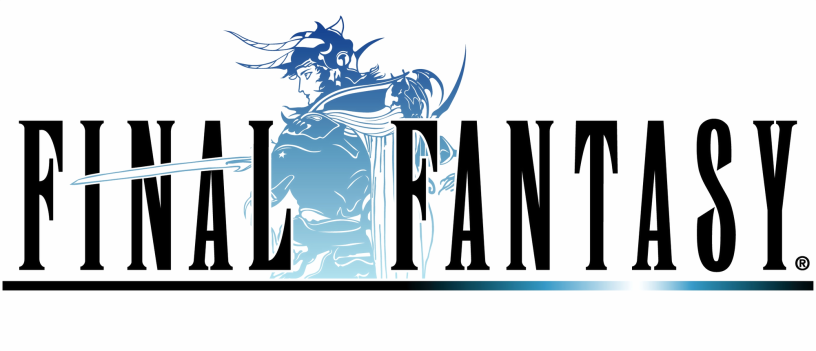
I’ve never actually played any Final Fantasy games – only seen clips on YouTube – so I’m interested to learn more about them from your blog.
LikeLiked by 1 person